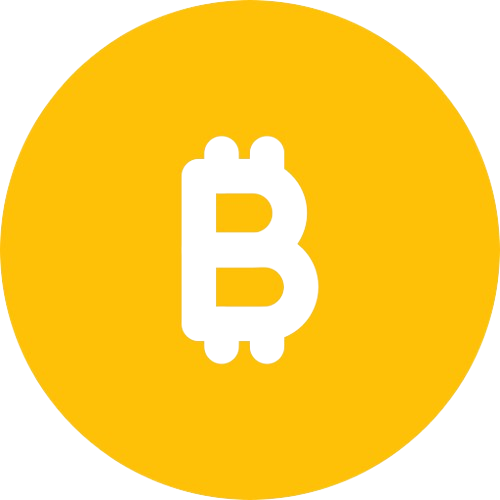
The metaverse concept capturing attention lately envisions a future iteration of the internet where users interact immersively with digital environments through avatars. Early glimpses are already viewable as metaverse pioneers build interconnected virtual worlds supporting specialized applications around gaming, social connection, work, and more on blockchain.
Non-fungible tokens (NFTs) using the same underlying technology as cryptocurrencies like Bitcoin also take part in anchoring digital artifacts like artwork, music, videos, avatars, and even virtual land parcels to this emergent frontier. Examining evolving American engagement with blockchain-based metaverse domains unveils rising community participation that promises continued decentralization transferring influence, ownership, and value from physical realms into user-controlled digital spaces promising open access and opportunity for all.
The Limits of Physical Community
For generations, aspects like geography, societal divides, and financial resources greatly impacted access to collaborative spaces fostering creativity, livelihoods, and wealth generation in the United States. Digital realm advantages around cost, distribution, and reproducibility helped circumvent some engrained constraints, but benefits are still concentrated around privileged groups and institutions rather than regular users.
Web 2.0’s walled gardens further consolidated influence over digital community participation into several dominant technology companies that extract value through advertising and data exploitation rather than equitable value sharing aligned with user interests. Their centralized architectures cannot fully escape ingrained systemic biases carried over from the physical world.
The Metaverse Vector for Open Participation
In contrast, blockchain-based metaverse spaces allow decentralized community growth driven by direct user participation under transparent rules executed autonomously by code rather than powerful institutions. cooperation centered on shared interests rather than geography or existing social ties becomes possible as users directly shape emerging domains through cooperation and co-creation.
Interconnected metaverse worlds built on open blockchain ecosystems allow permissionless innovation where anyone can build specialized applications while composably sharing common development infrastructure. The collectively governed nature and transparency fundamentally differ from Web 2.0’s walled gardens designed around centralized data exploitation.
Core Roles for NFTs and Cryptocurrencies

Non-fungible tokens and cryptocurrencies play integral roles in anchoring interoperable metaverse domains to transparent blockchain economies.
NFTs represent unique digital artifacts like avatars, artwork, videos, tickets, virtual land, buildings, and more that users can securely trade and showcase across metaverses while retaining direct ownership rights themselves.
Domain-specific cryptocurrencies like MANA and SAND incentivize platforms and creators toward aligning metaverse evolution paths with user interests rather than extractive shareholders. Users even collectively govern protocol changes over time by staking and voting tokens. Such community governance and ownership fosters digital public spaces evolving responsively to user interests rather than top-down outside forces.
Early Views of Evolving US Metaverse Engagement
Despite nascent infrastructure, American creators and entrepreneurs are already carving out early poles of user participation that illuminate an alternative path for technology, community, and shared value aligned with open access and collective prosperity. Some glimpses into rising traction uncover how users themselves may shape metaverse emergence rather than institutions.
Gaming and Entertainment
American gaming pioneers lead adoption in leveraging NFTs and cryptocurrencies to build engaged metaverse communities where players, creators, and investors collectively capture value. Leading blockchain games register hundreds of thousands of users with surging exchange volumes reaching into the billions for cosmetic assets like character skins traded between players. Fan participation also propels meteoric growth for alternative sports leagues based on NFT representation. Such early traction signals strengthening direct community ownership over emergent entertainment economies once dominated by closed institutions.
Digital Fashion
Just as physical fashion allows personal expression, digital fashion tailored to custom avatars expands identity representation in virtual spaces. Interoperable clothing and accessory collections promoted by American creators and brands are driving mass consumer adoption of avatar NFTs to model the latest looks while moving between metaverse worlds. User-aligned growth of diverse fashion options promises continued decentralizing of digital culture itself into more personalized and expressive communal experiences reflecting inclusive users rather than top-down trends.
Digital Art Ownership
As exhibition spaces expanded access for fine art ownership to more Americans, NFT art transitioning signature works into metaverse galleries, shows and museums now provides direct onramps for wider community patronage and support for creators. Artists and collectors collaborate around pioneering models to deepen engagement while limiting exploitation by legacy institutions. Such experiments anchor artistic movements themselves to transparent blockchain provenance and shared governance further empowering diverse creative voices and perspectives.
Hybrid Experiences
Synergies between metaverse events and physical gatherings demonstrate how bridging real and virtual worlds expands access and provides more immersive experiences reflecting community interests. For example, NFT tickets grant holders special access to cultural events in both virtual and real venues. Such hybrid approaches recognize metaverses not as a replacement for the physical community but rather as a complementary vector to enhance connected participation.
The Outlook for User-Driven Emergence
Despite mass culture attention fixating on investment speculation or big tech renditions, American innovation and traction accumulating around open blockchain metaverse domains unveil an alternative vector for technology, community, and economic growth centered on direct user ownership, control, and collaborative worldbuilding.

As creators issue NFT assets owned and traded directly by engaged user bases, governance decentralizes away from closed legacy gatekeepers toward community cooperation guided by shared interests.
Permissionless participation allows anyone to build, create, and capture value rather than centrally planned technology and economic cycles dominated by institutions.
This expanding arena for open-world development ultimately relies on user participation and responsibility. In securing entry with tools like the best Bitcoin wallet options, American pioneers carry the duty to guide evolution away from speculation toward more equitable access and collective prosperity as technology, community, and economy converge around the emergent metaverse frontier.
Conclusion
Technology constantly expands the aperture of human connection and cooperation toward more open, accessible, and empowering paradigms aligned with ideals of equity and justice. The internet greatly enhanced information access but also concentrated community participation under closed centralized institutions and architectures. Blockchain now provides the infrastructure to collectively build alternative digital spaces for human cooperation free from discrimination, gatekeepers, and exploitation.
Cryptocurrencies and NFTs play integral roles in anchoring transparent economies where users themselves capture value and guide development toward inclusive interests rather than outside shareholders. As American pioneers traverse early virtual frontiers, the glimpses into rising traction showcase how technology can evolve when communities directly architect environments supporting open participation, creation, and exchange.
Guided by conscience, creativity, and collective responsibility, blockchain metaverses may mature from speculation toward mass adoption where a self-determined digital community ushers new avenues to equitable livelihoods transcending societal divides. The irreplicable magic of shared presence continues expanding across not just physical rooms but also user-constructed cyber cities and worlds unlocking unfathomable potential for human collaboration and fulfilled actualization.